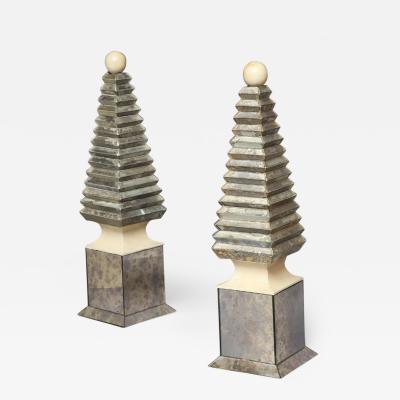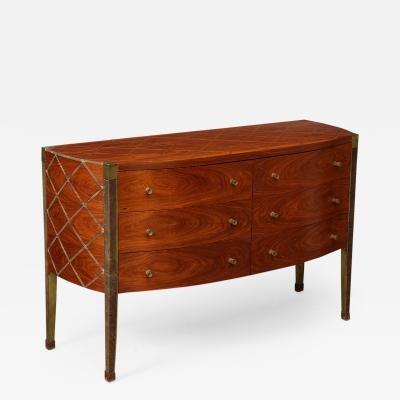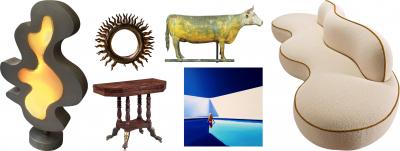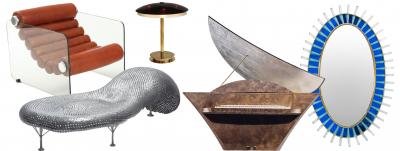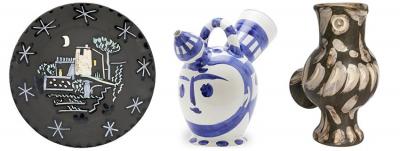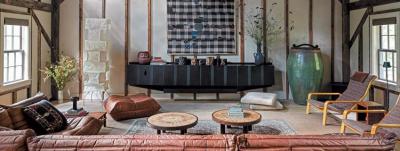Brian J. McCarthy, The Winter Show Design Co-chair, Shares His Design Show Strategy
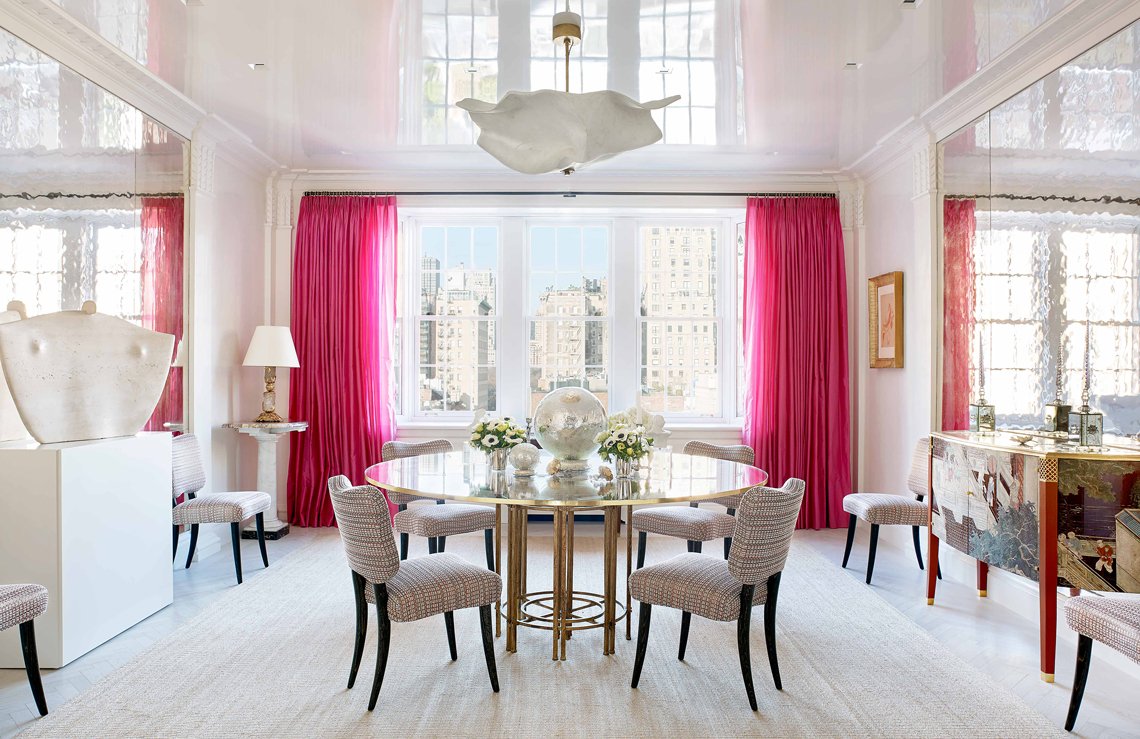 |
Fuchsia silk taffeta curtains bring the zing into a Park Avenue dining room. Brian found this apartment for his longtime Los Angeles-based clients, and worked in tandem with architect John. B. Murray to transform the space into an exuberant pied-à-terre filled with sparkling reflections, lustrous finishes, and bursts of brilliant SoCal hues. The table base is a custom commission in patinated bronze by contemporary Parisian artist Patrice Dangel, with a gilded-edge glass top. At right, a modern console by French furniture artist Louis Cane was created using 18th-century Chinese Coromandel lacquer panels, as was done by the 18th-century French cabinetmakers who crafted the first Chinoiserie furniture. The console is topped with a pair of 1936 mirror and glass obelisks by Serge Roche. The sculpture at left, representing the female / mother figure, is by Sardinian sculptor Costantino Nivola. Photo by Francesco Lagnese. |
 | |
Interior designer Brian J. McCarthy is Design Co-chair of The Winter Show, which opens this Friday, January 24. Photo by Francesco Lagnese. |
 |
nterior designer Brian J. McCarthy creates gracefully elegant, art-filled interiors with distinctive, exquisitely crafted bespoke finishes, and often accented with unexpected flourishes. Each project is an original, highly personal world, a design story imbued with richness and subtlety that is an amalgam of his clients aesthetic preferences, guided and filtered through own highly trained eye. Brian began his career at the legendary Parish-Hadley firm and rose to partner before leaving, with the blessing of his mentors, to open his own firm in 1992. He is the author of two books, Luminous Interiors, which shows the remarkable range of his work through stunning visuals and narratives of nine opulent residences, and The Parish-Hadley Tree of Life, co-authored with Bunny Williams, which relates the experiences of 30 of the firm’s alumni, accompanied by images of their work that illustrate lessons learned at the venerable firm.
 | |
Helen Allen, executive director of The Winter Show |
Brian, an inherently curious devotee of art and design shows, has been attending The Winter Show since the 1980s, as source for rare and distinctive pieces for his projects as well as fertile ground for inspiration.
Helen Allen, executive director of The Winter Show spoke to us about Brian and why he is an inspired choice for Design Co-Chair: “Brian creates dream-worthy interiors that are majestic yet livable. We are thrilled to have him joining us as a Design Co-Chair at The Winter Show this year. His understanding of historical material and his ability to seamlessly marry antiques with color and contemporary works makes him a quintessential Winter Show design chair.”
 |
Incollect asked Brian to share his thoughts on The Winter Show, his strategy for shopping design shows, as well as advice on developing an eye for great design objects, and how that can lead to interiors that are meaningful and reflect our true selves.
Incollect: You're a Design Co-Chair at The Winter Show this year and you've said it's a do-not-miss event for you every January. What do you think makes The Winter Show special or different from other fairs?
Brian J. McCarthy: What I love most about The Winter Show is the diversity of its exceptional exhibitors and the varied range of fine and decorative arts for sale. Nowdays, many of the fairs tend to have a tighter focus but The Winter Show has something for everyone.
Incollect: What is your strategy when attending design fairs and antique shows — do you get an overview and then revisit, or do you have an advance plan and visit specific booths? Do you take many photos? Have a shopping list with particular projects in mind?
BJM: If I am planning to bring a client specifically to shop the fair, my team and I will generally have walked the show beforehand without them so that our time with them is efficient. And we always prepare a list of our needs so that we are sure to be looking out for those items. I tend to be less of a photo taker than those on my design team, but if we are interested in something, we always request that the dealer send us information and images. And I always have my trusty wooden folding ruler with me so that I can measure things! I never leave home without it — a habit I developed when working with Albert Hadley.
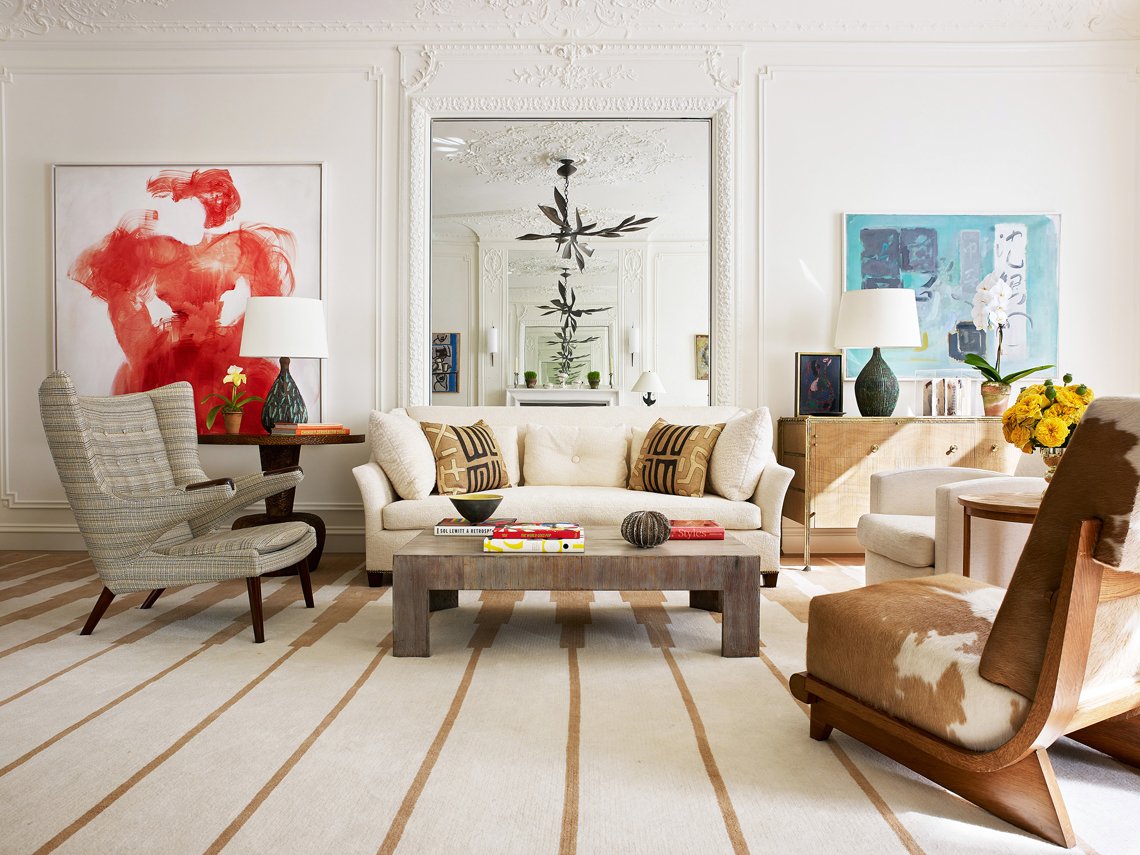 |
An apartment in The Apthorp, a landmarked historic Italian Renaissance Revival building designed for William Waldorf Astor, was transformed into a youthfully chic and radiant melange under Brian’s artful orchestration. One of the first considerations was restoration of the original 1908 plasterwork, linking the decor to the building’s illustrious past. Painted a uniform shade of white, it creates a subtle but intricate framework for the modern furnishings, in which each object radiates form. To enhance the already abundant light sources – open views with direct light and filtered light from the interior courtyard – Brian installed three large mirrored panels, two directly across from one another, creating a trompe l’oeil effect with multiplying reflections, most notably the sculptural Matisse-like form of Hervé van der Straeten’s Lustre mobile. A diverse collection of furnishings dating from the 1930s to the 1950s includes Hans Wegner’s classic “Papa Bear” chair from 1951, and a cerused oak cocktail table by the infamous mid century designer James Mont, known for both his scandal-ridden private life and for the exquisite beauty of his perfectionist finishing techniques. At right, a low-slung cowhide-covered French 1950s slipper chair and at the rear, a custom commissioned teak and bronze commode by French painter, sculptor and furniture artist Louis Cane. The owners are drawn to works by contemporary Israeli artists; the wife was born in Israel and the couple maintains a residence in Tel Aviv. From their collection, Brian installed a painting by Yehudit Levin, left, and at right, a work by Fima. Photo by Francesco Lagnese. |
Incollect: Can you tell us about some particularly memorable experiences you’ve had at shows — treasures you’ve unearthed, legendary interior designers or celebrities you’ve spotted?
BJM: I am glad to be able to say that there are a lot of those memorable experiences, but if I had to choose one it was meeting Hubert de Givenchy at one of the Biennale des Antiquaires in Paris many years ago. For me, he represented a rare elegance and had truly extraordinary taste.
 |
Chartreuse and André Arbus add piquant accents to the radiant clarity of a Park Avenue living room. Photo by Francesco Lagnese. |
Incollect: What are your thoughts on mixing art and design from different periods, regions, etc.?
BJM: Really what is there to even think about? It is ALL about a mix! Buy what you love and live with what you love. Mix it up!
Incollect: What do you look for when purchasing antiques? Do you have any tips on how to talk to dealers?
BJM: My only tip is that you must talk to the dealers! Always ask questions and don’t be shy about it. Dealers love to share their knowledge and the only way to learn is to ask. I am no Einstein, but I owe a great deal of my knowledge of the decorative arts and furniture to some of the great dealers out there, both here in the US and abroad.
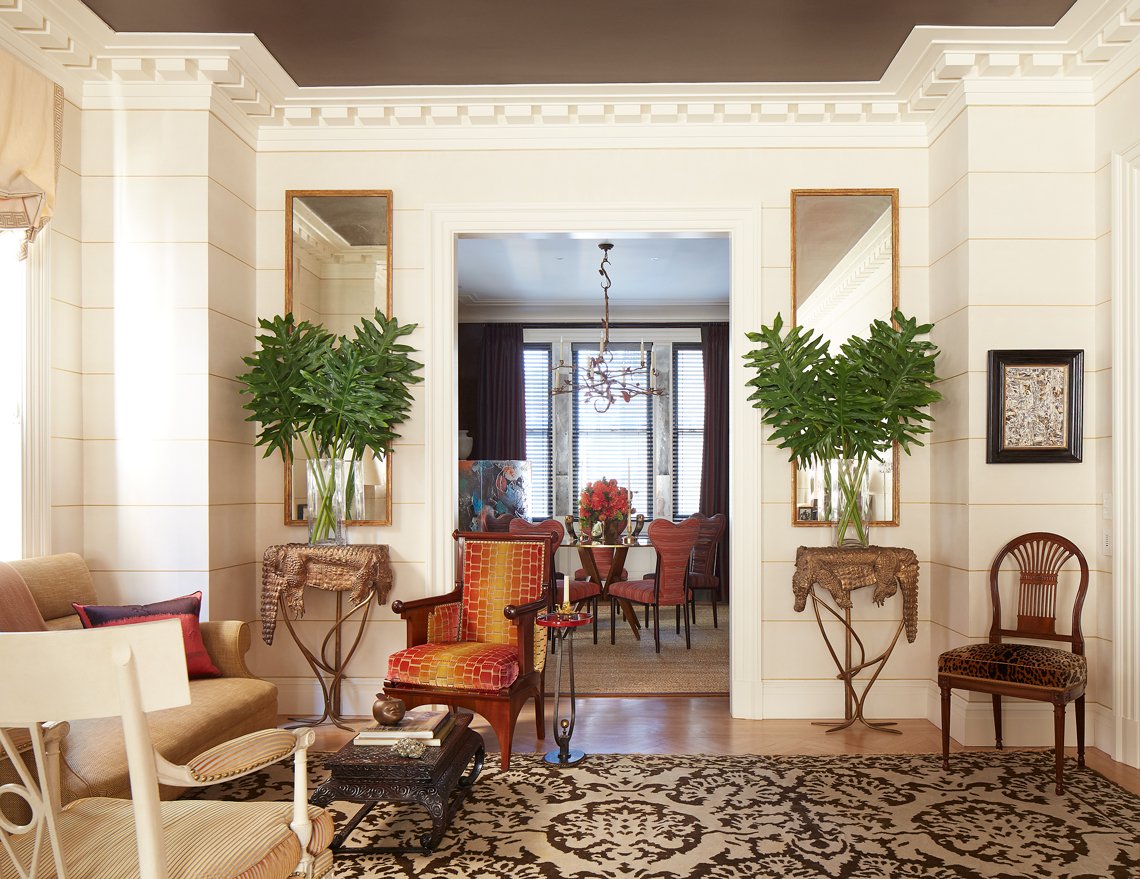 |
In Brian’s New York apartment, a view from the living room into the dining room. The pair of bronze consoles flanking the portal are by the late Claude Lalanne, Crococonsole, A: Tete a droite, and Crococonsole, B: Tete a gauche, 1994, each from an edition of eight. Brian once remarked that these extraordinary works of art are the objects he would choose to save in the case of a fire. The purchase was paid for over the course of a year, and the day they arrived, he wrote in his 2013 monograph Luminous Interiors, was “the most exciting art-related moment of my life.” On the coffee table is another piece by Claude Lalanne, Pomme Bouche, 1998. The chair at left is early French Empire by Jacob-Desmalter, covered in a velvet designed by Émile-Jacques Ruhlmann. Photo by Max Kim-Bee . |
Incollect: What are the least and most expensive pieces you’ve purchased?
BJM: The range is so varied, it’s impossible to pinpoint, though the most expensive piece I’ve purchased over the years is a large painting by Albert Oehlen. And here’s a tip: dealers are more than happy to do lay-away plans, so don’t be bashful. My first purchase from Claude Lalanne many years ago was a pair of crocodile consoles which took me a year to pay off, but boy was that a great investment.
Incollect: Tell us about “the one that got away” — something you wish you’d purchased and didn’t, and later regretted.
BJM: How about something I had, but in retrospect practically gave away and now wish I hadn’t? Years ago, I bought a painting by Wilfredo Lam and a few years later a collector contacted me about buying it and I sold it. I still regret it!
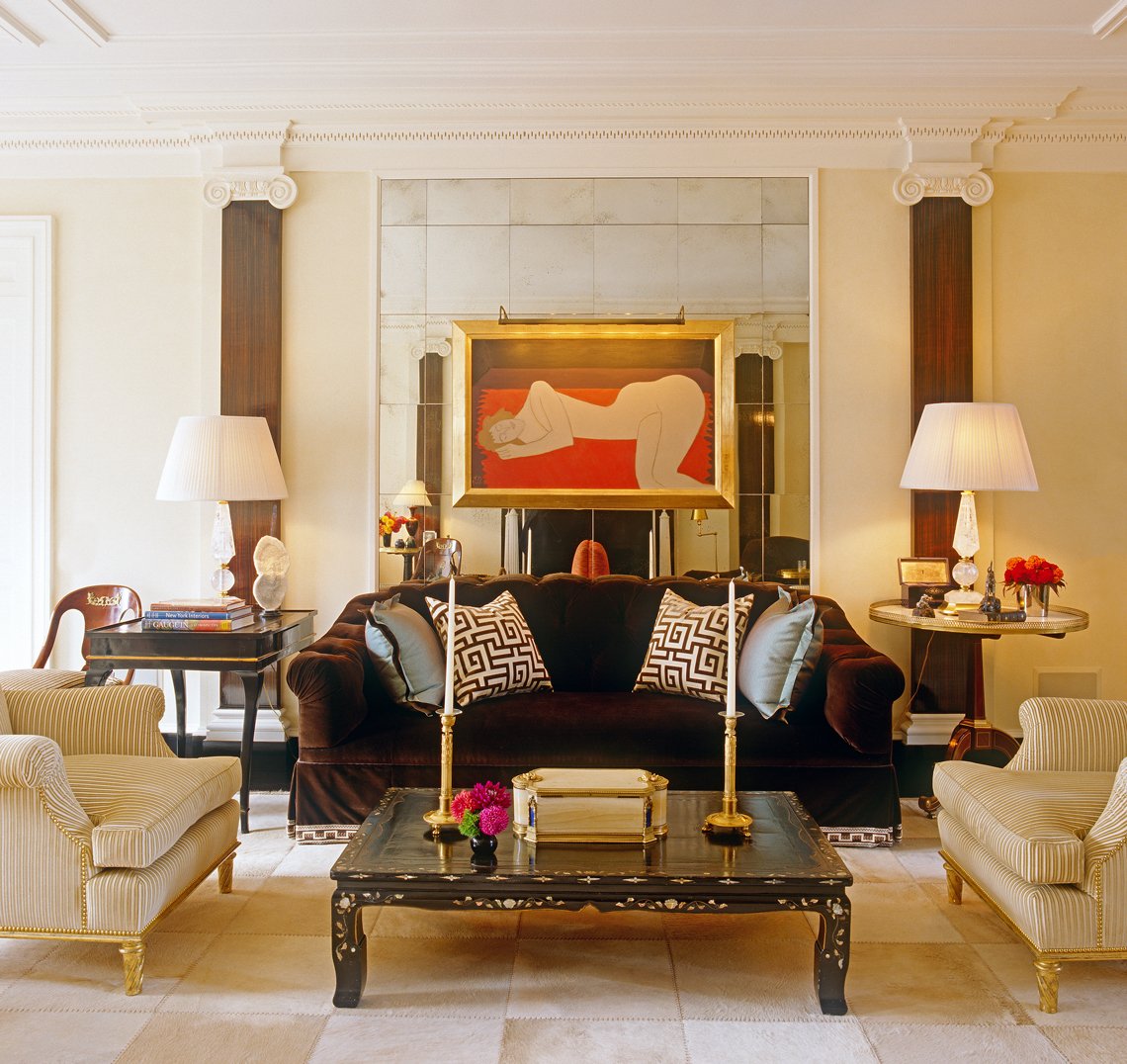 |
For an apartment previously decorated by his mentor Albert Hadley, Brian hung a dream-like work by Milton Avery over a mirrored panel. The conversation group is arranged in a symmetrical layout, but composed of an eclectic array of furnishings: a Chinese lacquer coffee table with mother-of-pearl inlay, a Louis XVI bouillotte table at one end of the sofa, with an ebonized wood and gilt bureau plat placed at the opposite end. All of the architectural detail was new, including the pilasters which were faux-painted as Macassar ebony and topped by classical Ionic capitals. Throughout, light and dark tones were meticulously balanced and contemporary elements, such as the rug made of top-stitched calfskin squares, were introduced to provide a contemporary counterpoint to antiques and vintage pieces. Photo by Fritz von der Schulenburg . |
Incollect: What would you advise a young client who wants to begin collecting?
BJM: Be it art or furniture, it is again all about educating oneself. Go to Chelsea to visit galleries, go to the antique fairs. Initially, it’s all about educating the eye and to develop a point of view by learning what appeals to you. Begin by shopping the better dealers to develop a reference for good things. This will allow your perspective and “eye” to grow, so that when you are shopping in the smaller galleries or even lesser-known shops, villages and fairs you will find that curious eye working to your advantage.
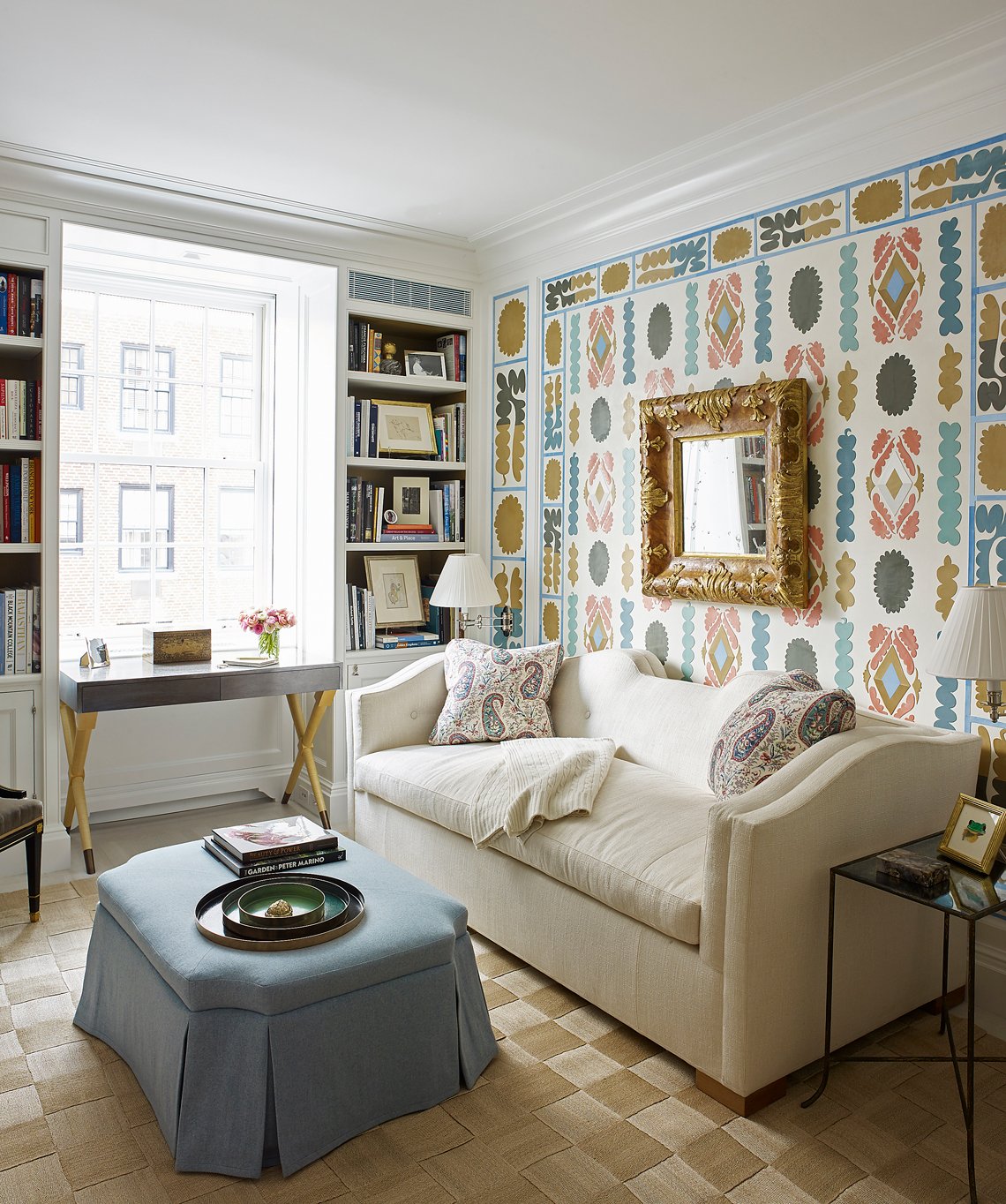 |
The elaborate gilt foliate detail on a circa-1750 French mirror plays off a similar motif in a hand-painted wall design inspired by Matisse’s cutouts. Decorative painter Mark Giglio, one of Brian’s go-to resources, executed the custom design on Venetian plaster walls. This room illustrates how just one antique piece can become a focal point, pulling an entire room together and elevating it to the extraordinary. Photo by Francesco Lagnese. |
Incollect: How do you incorporate antiques into your work and/or personal style? Do you have a favorite piece you can tell us about?
BJM: When I was younger, I had a love affair with late 18th century neoclassical furniture, and in particular, mahogany furniture. I was particularly inspired by the great New York City dealer Garrick Stephenson, who had an exquisite eye for these periods and for the unusual.
I view a room and the contents of a room — whether it be designed with an antique, modern or contemporary sensibility — as a wonderful cocktail party. You want to invite a mixed and varied cultural group from all walks of life to make it interesting. The same applies to combinations of furniture to achieve a noteworthy interior.
 | |
|

















